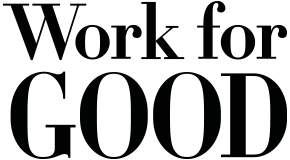Addressing burnout in your resume, interview, and career
(Image: DS Stories)
Even before the ongoing pandemic era began, burnout had become a buzzword, especially among nonprofit employees. As The Atlantic reported in 2016, a solid 50 percent of nonprofit employees were either actively experiencing, or were in danger of experiencing, burnout.
Today, burnout is more pronounced than ever: As pandemic conditions have made work-from-home positions increasingly common, the lines between work and home-life have only become more blurred, leading to new forms of burnout.
According to The Atlantic, nonprofit employees can become particularly susceptible to burnout because nonprofit organizations have more limited budgets than corporate counterparts and a tendency to “put the needs of staff behind mission-driven ambitions.” The result: Nonprofit employee turnover in the U.S. and Canada is higher than in the general labor market.
If you’ve experienced burnout, you may have left your job abruptly, without having secured a replacement position. Sometimes it’s necessary to your physical and mental health to take some time to recover from burnout prior to restarting your job search.
Unfortunately, this can create a cycle in which:
- Burnout leads to time away from work.
- Time away from work leads to resume gaps.
- Resume gaps make it more difficult to secure a job.
- Burnout with the job search itself sets in.
So what can you do if the burnout cycle has your career search stuck on pause? And what can you do to keep future burnout at bay?
1. Structure your resume so that bots can’t detect the employment gaps.
Today, AI programs screen resumes and often discard those that show gaps. Fortunately, it’s relatively simple to evade this algorithmic pitfall by making sure that some form of activity is listed for every date range on your resume.
Say you were unemployed from 2020 to 2021. Rather than leaving this date range off your resume, include it with a brief description of what you were doing instead. This description could be anything from freelancing to volunteering to taking classes.
As reported in Quartz at Work, citing a “leave of absence” or stay-at-home parenting is also preferable to omitting a time period from your resume.
While recording personal pursuits on a resume might feel awkward or counter-intuitive, the key is to stop thinking of your resume as a record of formal education and employment. Rather, Quartz notes, “your resume is a story about you as a person and what choices you’ve made.”
2. Prepare a powerful work story before your interview.
Ideally, the personal choices documented in your resume also indicate the type of worker you are. Provided that your resume contains a consistent timeline and keywords for the position you’re seeking, it will likely earn you an interview. This is your chance to explain how the time you spent outside traditional employment has shaped you into a strong candidate.
If burnout was the primary reason why you took a leave of absence, it’s important to remember that you’re under no obligation to state this outright: Keeping things general by citing “health concerns” or “conditions of the pandemic” is sufficient.
If you decide to fully disclose burnout as a cause, frame it as a strength. For example, if your burnout was due to a values mismatch, explain the steps you’ve taken to get clear about your values and how the new position is a better fit.
Likewise, if burnout was due to switching to remote work, it can be a powerful plus when applying for office-based positions.
The one thing to avoid when discussing burnout: Throwing your previous employers under the proverbial bus. Keep the focus on yourself and the steps you’ve taken to address burnout.
3. Be sure you’re actively living your work story and don’t repeat past mistakes.
Even after reframing your resume timeline and developing a good work story, the reality is that it still takes time to get hired. This can be exhausting, causing a resurgence in burnout amid the application process itself.
One remedy for application burnout is to be sure that you’re following through with, and enjoying, all the good habits your resume and work story highlight.
For example, if you decide to spend your time between jobs taking classes, choose ones that excite and energize you. The same goes for pursuing volunteer opportunities and joining social networking clubs.
The idea is not just to learn valuable new skills, but to find opportunities to make connections with a new group of professionals who can introduce you to careers you might not have realized make a good fit for your existing experience.
Above all, breaking the burnout cycle means avoiding the trap of becoming so frustrated with your career search that you end up taking a position almost identical to your previous one. As career coach Phoebe Gavin tells Quartz at Work, “Your burnout is not like a cold that goes away.”
Within the world of nonprofits, avoiding a burnout relapse means that you must resist the urge to accept a position only because you support an organization’s mission. Making sure that an organization’s culture, expectations, and pay range are also a match is the best way to genuinely grow your career while keeping burnout at bay.
Kelli Karanovich was an editor at Work for Good, a professional copywriter and educator, and an activist, essayist, and poet publishing under the name Kelli Lynn Grey. Sadly, Kelli passed away in 2022. If you enjoy her writing, please consider contributing to this memorial fund in support of her children.
This article was fact-checked and updated in January 2024.
Feeling informed, inspired, and empowered? Now's the perfect time to search for your next job! Or set up a job alert, and bring the search to you.



